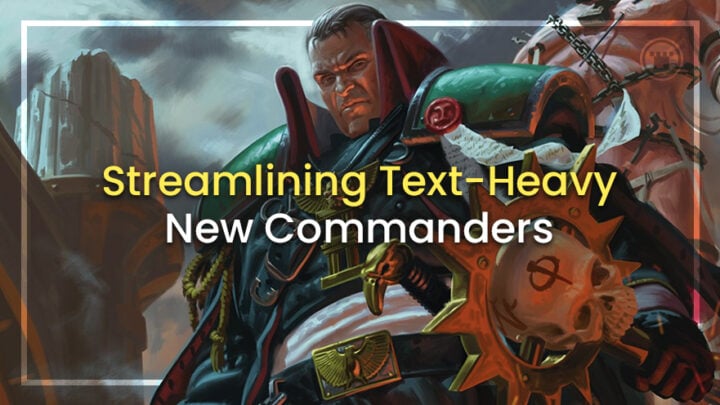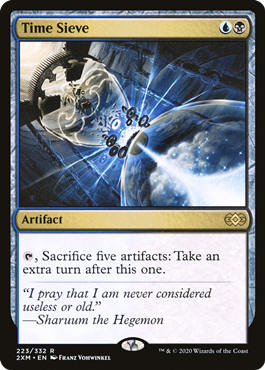Have you noticed popular commanders are getting more mechanically complex every year? Recent sets have set records for the amount of rules text on cards, but it’s definitely most apparent on the legendary creatures leading our Commander decks.
WHY SO LOQUACIOUS?



The trend is driven both by general power creep and an even more insistent push for novelty.
In 2023, even casual players have learned to expect a supercharged, resource-rich environment. Everybody understands how important ramp and card draw are if you want to have an impact on shorter, more explosive games — including Wizards of the Coast designers.
So now that Commander is Magic’s flagship, they have been quick to make sure every deck has access to these now-mandatory tools. And stapling them onto a commander allows players to benefit from increased resources in every game without wrecking the balance of other Eternal formats.
The other big challenge for the designers is how to keep selling new cards and archetypes for a non-rotating, casual format. New commanders have to offer an experience different to the 1,698 existing options, and that tends to mean adding more specialized and complex abilities to carve out their niche.
And if that niche is something inherently underpowered or under-supported (such as brand new set mechanics being pushed in the accompanying precons) then the new commanders need even more “incentive text” to make it viable.
UNDERSTANDING EISENHORN
I’m not trying to argue that their ever-expanding rules text makes new commanders worse, or even worse for the format. But it does make it harder sometimes to build a focused deck around them — especially when their theme isn’t as one-note as “play cards with this type on them”.
This is a particular stumbling block for newer players, as I was reminded of recently when a friend asked me to help him draft an Inquisitor Eisenhorn deck list.
This friend is only a “relatively” new player; this is not his first, second, or even third Commander brew. But Inquisitor Eisenhorn just offers too many possible synergies without enough direction on how to combine them into a coherent gameplan.
I mean that literally! I’m convinced the only way to get a satisfying play experience out of some recent commanders is to strategically ignore half the text. But knowing which half that should be is just not the kind of thing you can do off the cuff without extensive Magic experience and knowledge of the whole Commander card pool.
After talking through some of the pros and cons of my friend’s deck list, I knew I had to try and help bring that barrier back down a little — and so we arrive at this article.
HOW TO GET A CLUE (OR SIX)
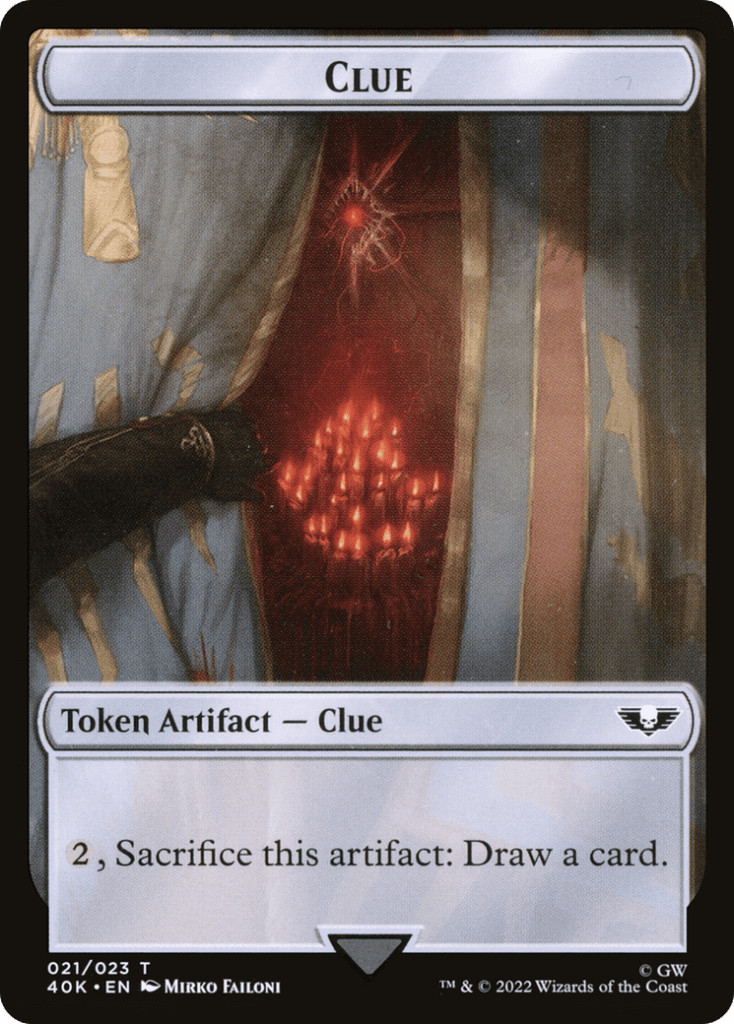
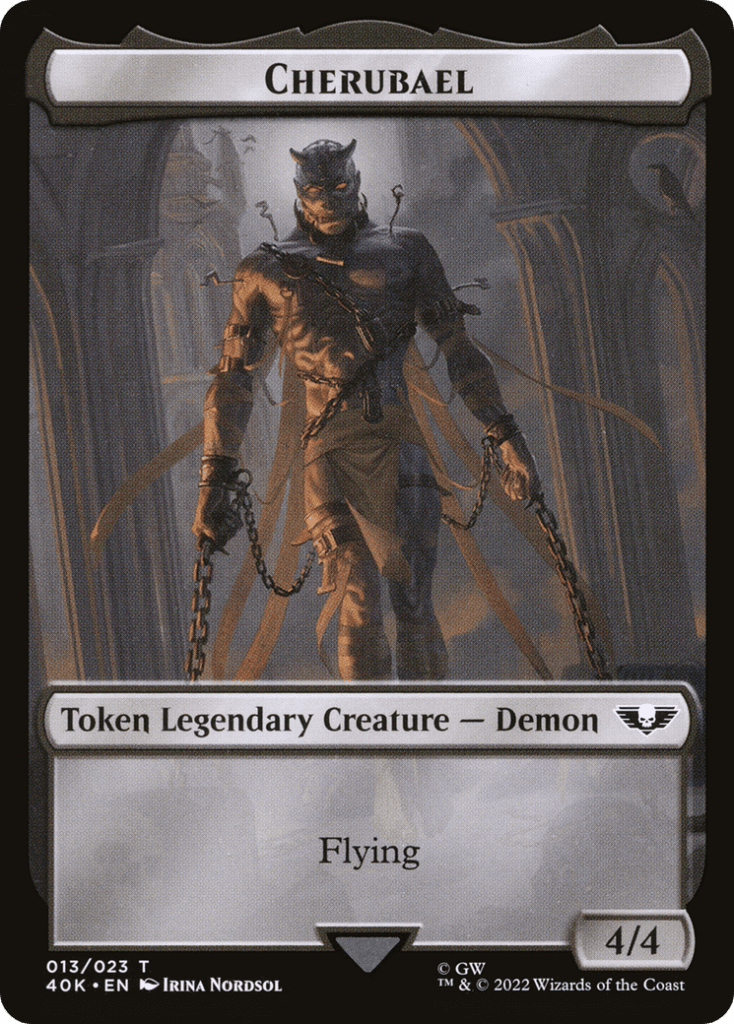
First of all, let’s try and get an idea of what themes an Inquisitor Eisenhorn deck could support. From his rules text alone, you can see reasons to prioritize card draw, scrying, instants/sorceries, artifact tokens, Clues specifically and commander damage.
Obviously you can go a lot deeper with your synergies than just “things specifically mentioned in the commander’s text.” But identity matters, and new players in particular have been trained to read commander text boxes as an advertisement for their playstyle.
My friend picked Eisenhorn because he wanted to make a lot of Clues, and possibly a lot of Cherubaels. So, I want to make sure I’m recommending themes that will line up with that specific power fantasy.
At least for a casual power level, the important questions I think we should ask are “which themes play well together,” “which themes are well supported” and “which themes fit best into a viable Commander gameplan.”
For the first answer, it feels like there are two sets of synergistic themes that happen to align neatly with the two blocks of rules text. Blue has a great many instants and sorceries that efficiently manipulate the top of your library and allow for instant-speed draw to strategically trigger the first ability on opposing turns. But the second ability asks us to care about artifacts, tokens and boosting Eisenhorn’s combat damage, all of which are harder to achieve alongside a high instant-and-sorcery density.
Looking at which themes offer the strongest and most flexible options for support within the Commander card pool, instants and sorceries are the clear winner. There’s also decent support for topdeck manipulation and “miracle” effects.
Clues are the most limiting theme since they only appear in specific sets and typically function as an incidental supporting mechanic, with only a handful of specific support cards for clues themselves.
Finally, the most important question: how does each set of themes (and the support cards we’ve identified) actually fit into a Commander game? How do they keep up, interact, pull ahead and win? To me, this has a lot to do with the relative strength and the nature of the payoffs. And while there’s a lot of very powerful ways we could build around the first effect, this is where it falls down for me.
Creating a 4/4 flier for free is nothing to scoff at, but Cherubael being legendary makes it hard to get more than incidental value from this creature. It’s not impossible to use as your win-con (you can repeatedly sacrifice the token for value, and we keep getting new Mirror Box effects) but it seems too complicated to be consistent, and too narrow to be interesting.
Meanwhile, dealing lots of combat damage with a commander is already win-con unto itself. Blue and black have some of the very best tools to protect a commander and sneak it past blockers, consistently. As a game plan it’s still slow and vulnerable to disruption, but the additional payoff of clue tokens means you’re pulling ahead on resources by attacking even if you haven’t managed to finish anybody off yet.
It’s clear to me how the second ability can lead to a win and how the full deck list can be built around that plan. We could build around the first ability and just slap some classic two-card infinites in there, but I know that’s not going to be the Eisenhorn-centric identity my friend wants his deck to have.
As a result, my starting point for advising him would be to straight-up ignore the first 50% of his commander’s text and just make sure he’s taking full advantage of the rest. Easy!
WHEN THE THEME IS WEAK, BUILD AROUND THE SUPPORT
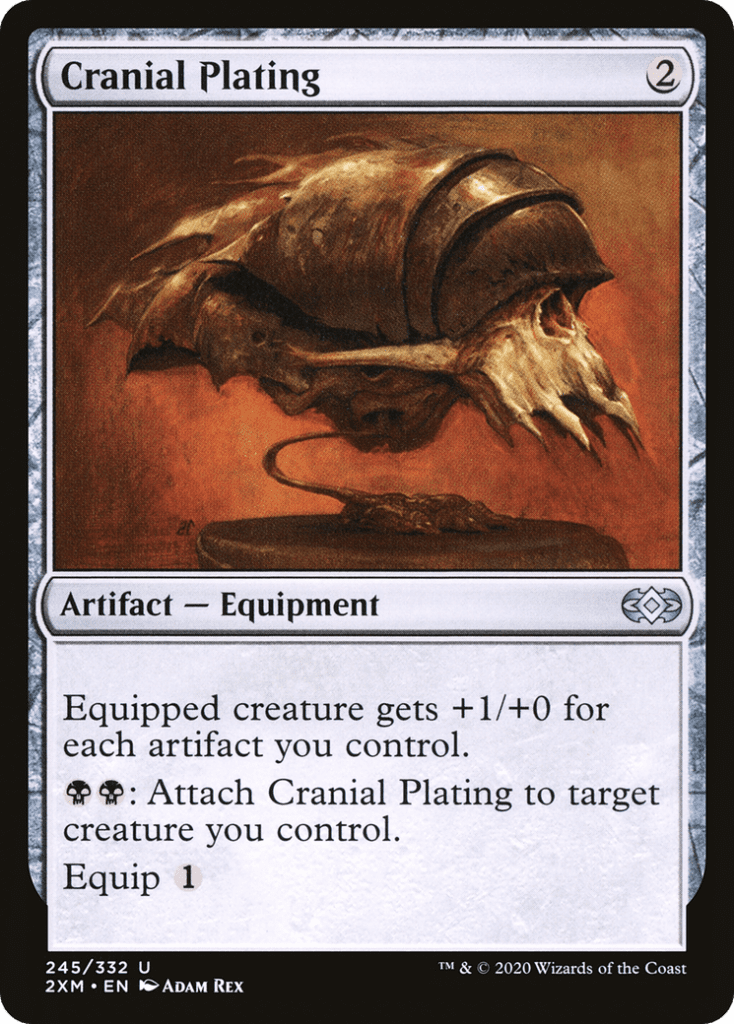
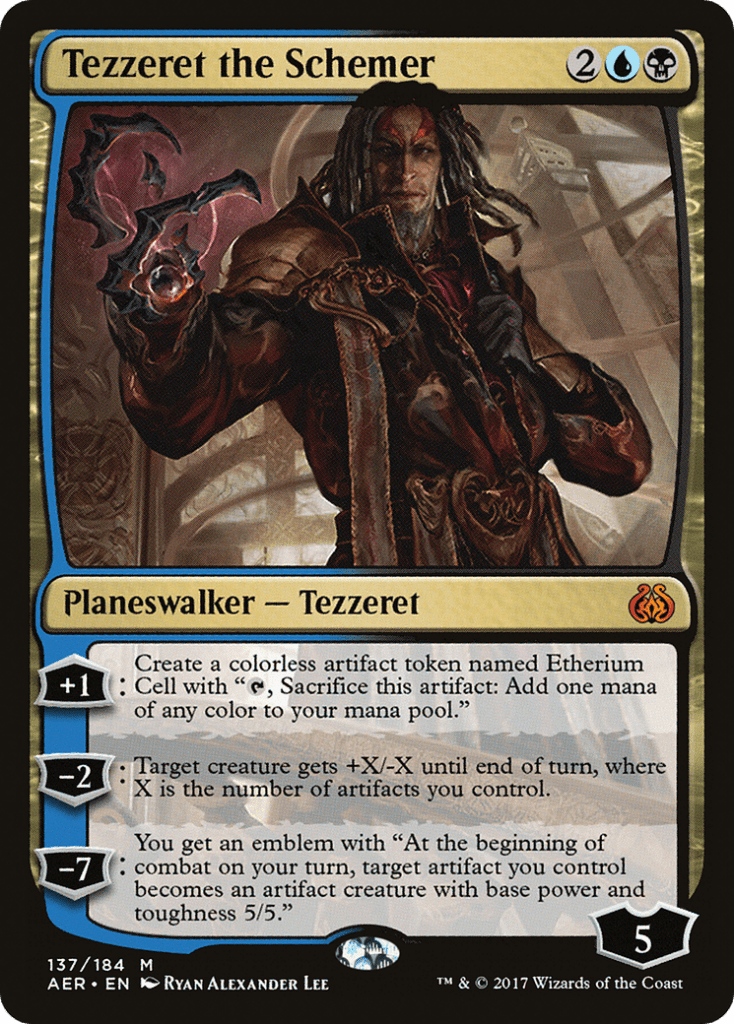

Eisenhorn is certainly a cool card, but he’s not really doing much work to help us build around this combat damage effect. He has terrible stats, no evasion and no built-in way to leverage his clues except slowly paying to draw from them. If you’re a silver-linings person, then I suppose you could say we at least know what our other 99 cards should be bringing to the table!
When I’m looking to add cards to that shortlist, I’m obviously trying to find ones that synergise with our chosen Eisenhorn themes. But Clues themselves are undersupported as a main mechanic, and playing cards to take advantage of them (or even commander damage in UB) means playing cards that are… pretty bad.
However, we aren’t forced to literally only play into those chosen mechanics to support the deck. What we can do — particularly when our chosen themes are a tad underdone — is to find cross-synergies between our compatible support cards and make those secondary themes to feed back into the original. Experienced players will have the pronounced advantage of knowing cards here, but anyone can use Scryfall and search for key phrases with a little practice.
Once you know that cards like Cranial Plating, Nettlecyst, Hunger of the Nim and Tezzeret the Schemer exist, you can tell that “increasing combat damage using artifacts” will be the final piece to close the virtuous circle of our gameplay.
Using clues to draw cards can help with the plan to deal more combat damage, but it’s slow and inefficient. So, the best thing we can do for this theme is give it a better way to convert clues back into damage without spending the mana to draw and play additional spells off them.
THE ANGEL IN THE MARBLE
I had my doubts at first, but after walking through this process, I’ve actually come around on the power and appeal of an Inquisitor Eisenhorn deck.
The support options for artifacts-matter are so broad that even if my friend sticks strictly to cards that help the commander-damage win-con, there’s still enough choices for him to put his own stamp on his deck’s design. Sure, he’ll be far from the first player to leverage Cranial Plating or Time Sieve, but those familiar weapons are still helping to make Eisenhorn the star of the show, not pushing him to the sideline.
This might seem like a lengthy process to go through for one random commander, but really it’s just how I’ve learned to evaluate cards in the new age of Commander-focused design. It’s important to keep finding your excitement for new cards, no matter how long you’ve been playing.
Even if you don’t ever actually build that new commander, or help a friend build it, you’ll at least have gotten a bit of sneaky mental preparation in for when you inevitably spot it across the table from you.

Tom’s fate was sealed in 7th grade when his friend lent him a pile of commons to play Magic. He quickly picked up Boros and Orzhov decks in Ravnica block and has remained a staunch white magician ever since. A fan of all Constructed formats, he enjoys studying the history of the tournament meta. He specializes in midrange decks, especially Death & Taxes and Martyr Proc. One day, he swears he will win an MCQ with Evershrike. Ask him how at @AWanderingBard, or watch him stream Magic at twitch.tv/TheWanderingBard.

